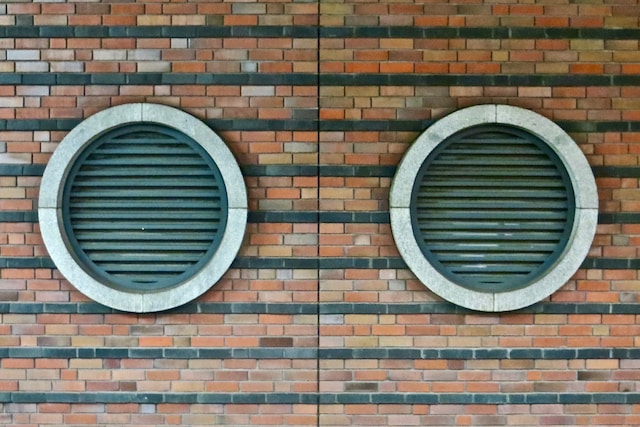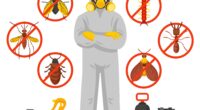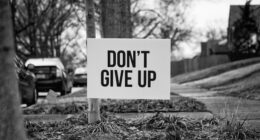Ventilation focuses on bringing fresh outdoor air into a space and removing stale indoor air. Air conditioning is specifically designed to cool or heat the air in a controlled manner.
What is ventilation?

Ventilation refers to the process of exchanging indoor air with fresh outdoor air. It involves the movement of air through natural or mechanical means, such as windows, doors, vents, or fans. The primary purpose of ventilation is to maintain a steady flow of oxygen-rich air and remove stale or polluted air from an enclosed space.
Proper ventilation plays a crucial role in maintaining good indoor air quality by reducing the concentration of pollutants such as dust, allergens, odors, and harmful gases. It also helps control humidity levels and prevents excessive moisture buildup that can lead to mold growth.
Ventilation can help regulate temperature by allowing hot air to escape during warmer months and bringing in cooler outside air. This can create a more comfortable living or working environment without solely relying on energy-intensive cooling systems like an AC unit.
What is air conditioning?

Air conditioning, often referred to as AC or A/C, is a system that cools and dehumidifies the air in an enclosed space. It works by extracting heat from the indoor air and transferring it outdoors, resulting in lower temperatures inside.
The main components of an air conditioning system include a compressor, condenser, evaporator coil, and refrigerant. These components work together to remove warm air from the room and circulate cool air back into it.
One of the key features of air conditioning is its ability to control both temperature and humidity levels. This makes it particularly useful in areas with high humidity or during hot summer months when temperatures soar. Air conditioning provides relief from sweltering heat and creates a comfortable environment for living or working.
In addition to cooling capabilities, modern AC systems often come with additional features such as filtration systems that help improve indoor air quality by removing dust particles, allergens, and pollutants. This can be beneficial for individuals who suffer from respiratory issues or allergies.
Ventilation Vs. Air conditioning – Key differences
Ventilation:
- Involves bringing in fresh air through natural or mechanical processes.
- Focuses on circulating and replacing air to remove stale air and odors.
- Helps improve indoor air quality.
- Does not directly control temperature or humidity.
- Can be achieved through windows, fans, or mechanical ventilation systems.
Air Conditioning:
- Involves mechanical processes to cool and dehumidify air.
- Focuses on controlling temperature and humidity levels.
- Provides comfort by lowering the temperature in indoor spaces.
- Can remove excess moisture from the air.
- Requires specific equipment, such as air conditioners or HVAC systems.
The benefits of ventilation
- Improved Air Quality: Ventilation helps remove pollutants, odors, and stale air from indoor spaces. It allows for the exchange of fresh outdoor air, reducing the concentration of indoor pollutants and improving overall air quality.
- Removal of Moisture and Excess Humidity: Proper ventilation helps control moisture levels in indoor spaces. It aids in the removal of excess humidity, reducing the risk of mold, mildew, and other moisture-related issues that can impact health and cause damage to structures.
- Regulation of Indoor Temperature: Ventilation can help regulate indoor temperature by allowing the exchange of hot or stale air with cooler outdoor air. This can provide comfort, especially in warmer climates or during hot seasons.
- Removal of Indoor Odors: Effective ventilation helps eliminate unpleasant odors caused by cooking, pets, cleaning agents, or other sources. It helps maintain a fresh and pleasant indoor environment.
- Improved Health and Comfort: Proper ventilation contributes to a healthier and more comfortable indoor environment. It can reduce the buildup of allergens, irritants, and volatile organic compounds (VOCs), which can have adverse effects on respiratory health and overall well-being.
The benefits of air conditioning
- Temperature Control: Air conditioning allows for precise temperature regulation, providing comfort by cooling indoor spaces during hot weather. It helps create a comfortable environment for relaxation, work, or sleep.
- Humidity Control: Air conditioning systems often have dehumidification capabilities. By removing excess moisture from the air, they help create a drier and more comfortable indoor environment. Controlling humidity can also inhibit the growth of mold, mildew, and other moisture-related issues.
- Improved Indoor Air Quality: Air conditioning systems are equipped with filters that capture dust, pollen, allergens, and other airborne particles. This helps improve indoor air quality by reducing the presence of these pollutants, promoting a healthier environment, especially for individuals with allergies or respiratory conditions.
- Increased Productivity: Studies have shown that comfortable temperature levels provided by air conditioning can enhance productivity in work or study environments. It helps maintain focus, reduce fatigue, and improve cognitive performance.
- Enhanced Sleep Quality: Air conditioning can significantly improve sleep quality by creating a cool and comfortable sleeping environment. The ability to regulate temperature and reduce humidity can promote better rest and deeper sleep.
Types of ventilation and air conditioning systems
| Ventilation Systems | Air Conditioning Systems |
|---|---|
| Natural Ventilation | Window Air Conditioners |
| Mechanical Ventilation | Split Air Conditioners |
| - Exhaust Ventilation | Central Air Conditioning Systems |
| - Supply Ventilation | Portable Air Conditioners |
| - Balanced Ventilation | Packaged Terminal Air Conditioners (PTAC) |
| Hybrid Ventilation | Variable Refrigerant Flow (VRF) Systems |
Image Credits
Featured Image By – Michal Matlon on Unsplash
Image 1 By – Dewi Karuniasih on Unsplash
Image 2 By –








